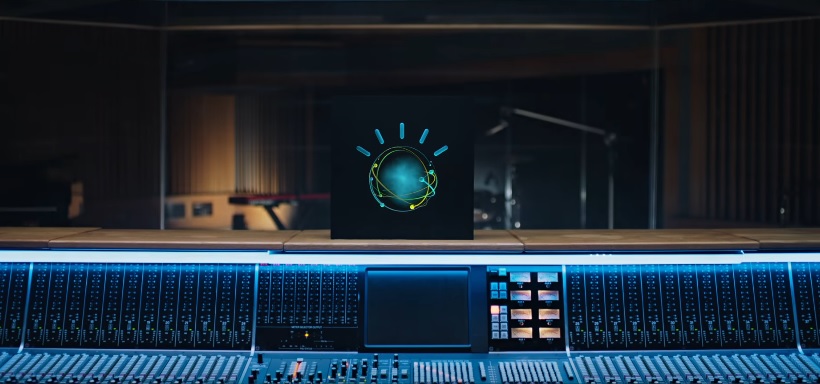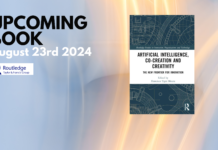The rush for the development of music produced by AI (artificial intelligence) has started roughly nearly four years ago. During this period a number of companies have taken the challenge, ranging from small start-ups to key global players.
And quickly it has started to impact the way we see music and art.
In the end of 2016 the first concert where only AI music was performed. It displayed various ways in which AI might soon be commonly used to produce music.
But who is actually developing music and algorithms to automate music composition?
I have developed a list with some of the main current players.
Let’s have a look at some them, with descriptions available on their own official platforms.
Companies Producing Music with AI
1. IBM Watson Music
 Description of the project with producer Alex Da Kid: “Alex Da Kid wanted a deeper connection with his audience. But with so many millions of people in the world, he needed a better way to listen to all of them. Watson AlchemyLanguage API helped by analyzing five years of natural language texts including New York Times front pages, Supreme Court rulings, Getty Museum statements, the most edited Wikipedia articles, popular movie synopses and more. Once Watson had learned the most significant cultural themes, Watson Tone Analyzer read news articles, blogs and tweets to find out what people felt about them”.
Description of the project with producer Alex Da Kid: “Alex Da Kid wanted a deeper connection with his audience. But with so many millions of people in the world, he needed a better way to listen to all of them. Watson AlchemyLanguage API helped by analyzing five years of natural language texts including New York Times front pages, Supreme Court rulings, Getty Museum statements, the most edited Wikipedia articles, popular movie synopses and more. Once Watson had learned the most significant cultural themes, Watson Tone Analyzer read news articles, blogs and tweets to find out what people felt about them”.
Watson also inspired Alex Da Kid by analyzing years’ worth of popular music. Watson Tone Analyzer API read the lyrics of over 26,000 Billboard Hot 100 songs while Cognitive Color Design Tool tool ingested its album art. Watson Beat then looked at composition of those songs to find useful patterns between various keys, chord progressions and genres completing an emotional fingerprint of music by year – brought to life in a fully immersive experience for Alex”. (Official Website)
Further description:
2. Jukedeck
 Description: “At Jukedeck, we’re building machine learning technology that can compose and adapt professional-quality music, giving people and companies personalised music that’s dynamically shaped to their needs.
Description: “At Jukedeck, we’re building machine learning technology that can compose and adapt professional-quality music, giving people and companies personalised music that’s dynamically shaped to their needs.
Jukedeck is based on state-of-the-art tech we’re building that brings artificial intelligence to music composition. We’re training deep neural networks to understand how to compose and adapt music, so that we can give people the tools to personalise the music they need. (Official Website)
Further description:
3. Humtap
 Description: “Humtap has developed proprietary AI and deep learning models which understand the musical creativity of any music band or artist. The models are capable of generating new original musical content in infinite volume as if such band has composed them themselves.
Description: “Humtap has developed proprietary AI and deep learning models which understand the musical creativity of any music band or artist. The models are capable of generating new original musical content in infinite volume as if such band has composed them themselves.
The development of these deep learning models coupled with Humtap’s other AI music production software, both on mobile devices and the cloud, can produce either short music clips or full songs, with the feeling of any band the models are trained with. The new content generation is instantaneous, and does not infringe on any copyrights since the copyright protected material is only used for training data and is untouched in the generation process.
Building on this new core technology, a number of new experiences can be built. For consumers, they can make new music with an artist in mind with razor sharp precision. For artists, they can create and generate new material of their own in no time. For social media and content sharing platforms, they can enhance their user experiences with newly enhanced media content. This is a music revolution that will have significant impact on music fans and artists alike”. (Official Website)
Further description:
4. AIVA
 Description: “Aiva is an Artificial Intelligence (A.I.) capable of composing emotional music, a deed usually considered to be deeply human. She has been learning the art of music composition by reading through a large collection of music partitions, written by the greatest Composers (Mozart, Beethoven, Bach, …) to create a mathematical model representation of what music is. This model is then used by Aiva to write completely unique music.
Description: “Aiva is an Artificial Intelligence (A.I.) capable of composing emotional music, a deed usually considered to be deeply human. She has been learning the art of music composition by reading through a large collection of music partitions, written by the greatest Composers (Mozart, Beethoven, Bach, …) to create a mathematical model representation of what music is. This model is then used by Aiva to write completely unique music.
Recently, Aiva became the first virtual artist to have her creations registered with an author’s rights society (SACEM), a feat that many artists thought impossible to achieve for at least another decade. This achievement does not mean that Aiva will replace musicians; we will continue to encourage collaborations between man and machine”. (Official Website)
Further description:
5. Chordpunch
 Description: “Chordpunch was set up to explore the many and moving forms of algorithmic music. That might mean a computer program generating every note you hear, or new electronic music inspired by algorithms, or human beings following interesting rules with musical outcomes. We aren’t too dogmatic, and mainly release recordings as documents of algorithmic activity rather than programs. But we hope to generate a lot of excitement.
Description: “Chordpunch was set up to explore the many and moving forms of algorithmic music. That might mean a computer program generating every note you hear, or new electronic music inspired by algorithms, or human beings following interesting rules with musical outcomes. We aren’t too dogmatic, and mainly release recordings as documents of algorithmic activity rather than programs. But we hope to generate a lot of excitement.
The name itself could refer to playfully punching harmony a friendly hello, or outright rejecting it in favour of raw timbre. We might imagine an early computer world of card punching, or punching in an aurally devastating instruction sequence”. (Official Website)
6. Amper Music
Description: “Amper is an artificial intelligence composer, performer, and producer that empowers you to instantly create and customize original music for your content. The music you make with Amper is always unique and broadcast-ready, and comes with a royalty-free, global, and perpetual-use license. Amper helps you further your creative vision and, ultimately, make better content, faster.” (Official LinkedIn)
Further description:
7. Flow Machines
 Description: “Flow machines is a research project funded by the European Research Council (ERC) and coordinated by François Pachet. Flow machines addresses the issue of enhancing individual creativity by looking at it through the concept of “reflexive interactions”. Reflexive Interactions are human-machine interactions with a system that attempts to imitate the user’s style. The vision behind flow machines is that manipulating images of oneself creates novel and very effective ways to boost creativity. This was demonstrated in particular with the Continuator system, and with interactions with jazz professionals, as well as children (see also the ongoing Miror project). The flow machines project will push these ideas further by proposing a radically new way of looking at content creation tools”. (Official Website)
Description: “Flow machines is a research project funded by the European Research Council (ERC) and coordinated by François Pachet. Flow machines addresses the issue of enhancing individual creativity by looking at it through the concept of “reflexive interactions”. Reflexive Interactions are human-machine interactions with a system that attempts to imitate the user’s style. The vision behind flow machines is that manipulating images of oneself creates novel and very effective ways to boost creativity. This was demonstrated in particular with the Continuator system, and with interactions with jazz professionals, as well as children (see also the ongoing Miror project). The flow machines project will push these ideas further by proposing a radically new way of looking at content creation tools”. (Official Website)
Further description:
Final Thoughts
These are just a few examples of companies developing music through artificial intelligence. Do not forget to keep track of the studies are we developing on this topic and also on more companies developing music through AI.
So stay tuned!






